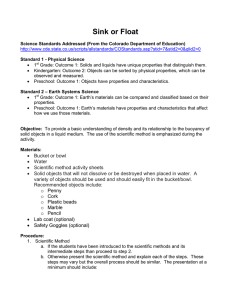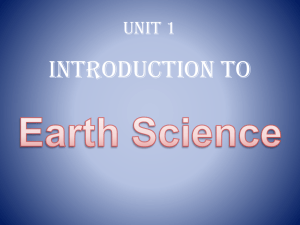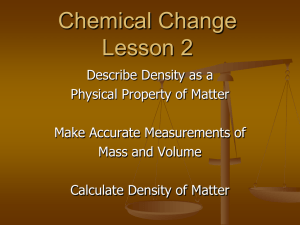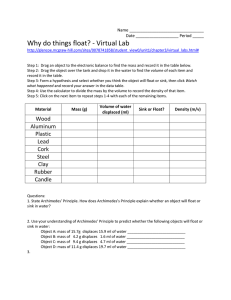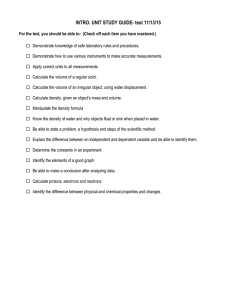Sample Science Activity Plan
advertisement
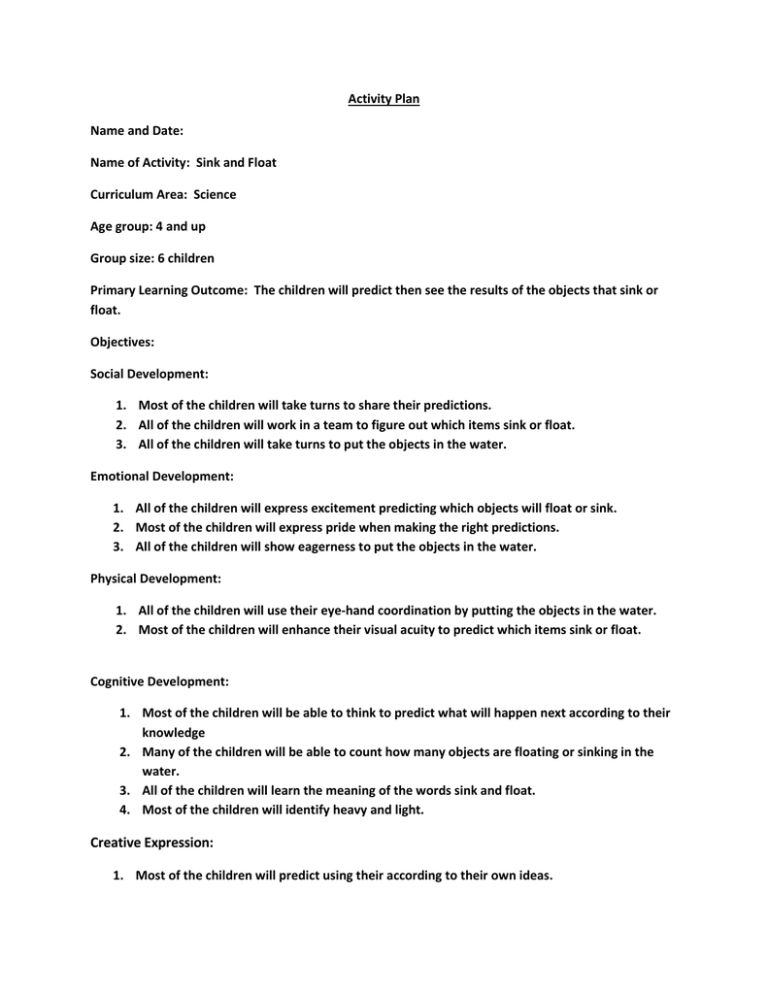
Activity Plan Name and Date: Name of Activity: Sink and Float Curriculum Area: Science Age group: 4 and up Group size: 6 children Primary Learning Outcome: The children will predict then see the results of the objects that sink or float. Objectives: Social Development: 1. Most of the children will take turns to share their predictions. 2. All of the children will work in a team to figure out which items sink or float. 3. All of the children will take turns to put the objects in the water. Emotional Development: 1. All of the children will express excitement predicting which objects will float or sink. 2. Most of the children will express pride when making the right predictions. 3. All of the children will show eagerness to put the objects in the water. Physical Development: 1. All of the children will use their eye-hand coordination by putting the objects in the water. 2. Most of the children will enhance their visual acuity to predict which items sink or float. Cognitive Development: 1. Most of the children will be able to think to predict what will happen next according to their knowledge 2. Many of the children will be able to count how many objects are floating or sinking in the water. 3. All of the children will learn the meaning of the words sink and float. 4. Most of the children will identify heavy and light. Creative Expression: 1. Most of the children will predict using their according to their own ideas. 2. Some of the children will generate discussions about sink and float according to their experience. Provision for Individual and Cultural Differences: 1. Some of the children may need one-on-one to read the book to understand the concept. 2. Children will choose their own individual predictions. 3. Some children may need support in their home language. Materials: leaves, sponge, key, boat, penny, water see-through container and graph. Procedure: We will define to the children the meaning of the words float and sink. Then we will ask the children to predict if the object will sink or float, using one object at a time. After predictions, the children will put the objects in the water and see the result. The teachers will record the predictions and results on the graph and then read back to the children. 2 Open-ended questions: 1. What do you think will happen to the boat when I put it in the water? 2. Why do you think the marble sank? Follow – up: The teachers will go over the graph to see who had the most predictions correct. Read a book about boats and explain why they float on the sea.

